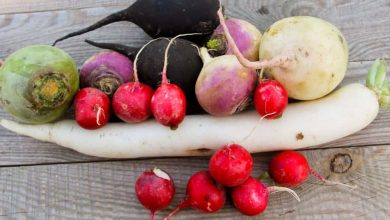Care of the bird’s nest fern or Asplenium
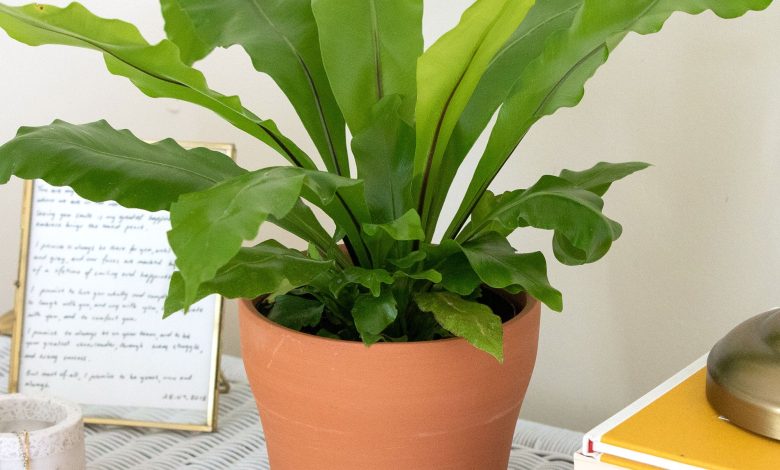
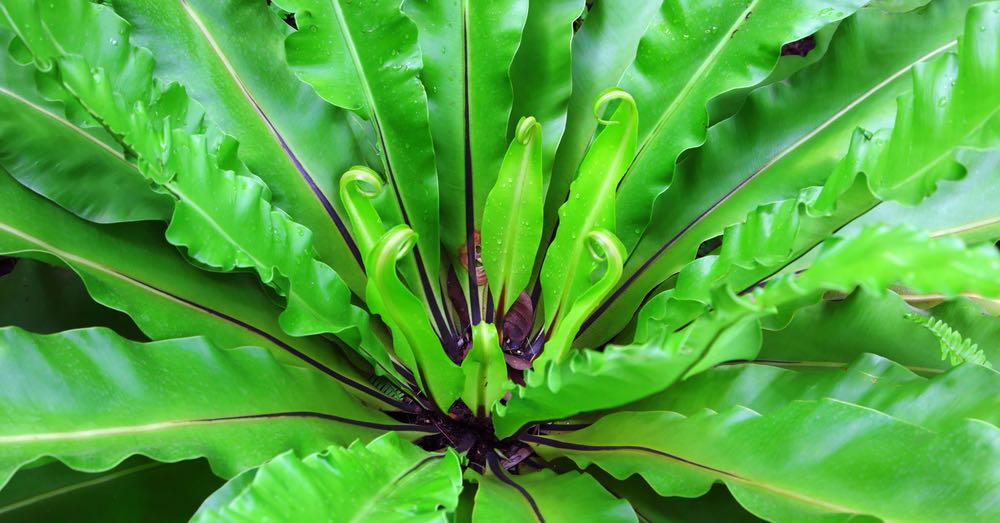
It is one of the most common plants in interior decoration, and it makes perfect sense. In addition to its attractive appearance, the care of the bird’s nest fern or Asplenium is so simple that it does not require great attention or extensive knowledge of gardening. We are talking about a robust plant that can grow even in adverse conditions. Or, what is the same, in spaces with little light. An aspect that makes this unique fern the ally of rooms such as the bathroom or even houses with interior rooms.
The care of the bird’s nest fern is marked, to a large extent, by its origin. Native to Japan, Australia, and India; It is found in its natural state in very rainy tropical forests. But that is not where the real peculiarity of this fern lies when we see it in the wild. The really curious thing is to know that it grows attached to the trunks of the trees. A support on which the Asplenium fern displays its large wavy leaves, which can reach half a meter in length.
If we are rigorous in the care of the bird’s nest fern, we will not only be able to enjoy its unique apple green color. We will also do it for your size. Because, giving it what it needs, it can reach a meter in height. Some dimensions that will make our fern, yes or yes, the natural protagonist of any space.
7 CARE OF THE BIRD’S NEST FERN CRUCIAL FOR ITS GROWING
Unlike other members of this same botanical family, the care of the bird’s nest fern is simple. An aspect that draws attention if we compare it with other common ferns indoors. Much more delicate and demanding relatives. The main virtue of Asplenium is that, even in adverse conditions, it is able to stay alive. Something that gives us clues about the robustness of a plant that, with proper care, can be long-lived and spectacular. A beauty that lies, above all, in the arrangement of its leaves and in how characteristic they are.
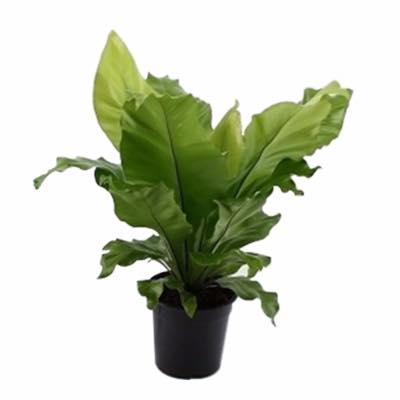
And we say this because the leaves are, without a doubt, the main attraction of this fern. To begin with, because they are grouped from the base of the plant creating a shape similar to a bird’s nest. A resemblance that is fundamentally based on the fact that the central space of the plant has a dark coloration. But, in addition to this aspect, there is another very peculiar one that defines the Asplenium. We refer to the shape of the leaflets, substantially different from those of other ferns. Instead of being serrated, they are oblong-lanceolate. Or, what is the same, they end in an arrowhead and with parallel sides.
Given its particularities, let us know what the care of the bird’s nest fern is. Some to take into account to enjoy its simple but striking natural beauty.
1. A lot of light, key in the care of the bird’s nest fern
We have started by saying that the Asplenium fern can live in rooms with low light, right. However, it is true that it is not its ideal habitat. What’s more: if we have this plant in a dimly lit space, it will not grow. It will only survive. Something that is part of that robustness and resistance that we mentioned before.
To be able to see our plant grow, we will have to contemplate the care of the bird’s nest fern by having it in a space with lots of light. Of course: always avoiding direct sunlight, as it can burn its leaves. The Asplenium needs a certain shade to be able to grow properly. Something that is largely dictated by those jungles where it grows naturally.
2. Monitor the temperature
Another care of the bird’s nest fern that is marked by its origins. Given its tropical origin, we will have to be careful with the temperature to which it is subjected. It can never be higher than 25 degrees, nor be below 15. Temperatures below 10 degrees can even compromise the life of the plant.
Added to this, we will have to avoid cold or hot air currents, such as those that can be created by a heating system. And not only that: the Asplenium is not very friendly to changes of location. A compelling reason for us to carefully plan where we are going to place it, ensuring that it is a valid place for both the sunny and cold months.
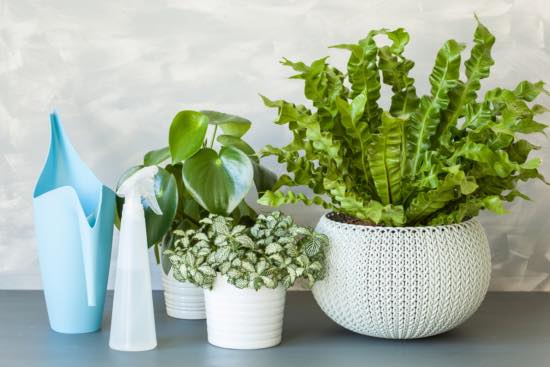
3. Humidity, another vital aspect in the care of the bird’s nest fern
We said that it is a plant typical of tropical forests. And if we insist on it, it is because it determines some of the essential care for the bird’s nest fern, such as humidity.
Accustomed to a habitat with a good degree of it, having it indoors will need us to hydrate its leaves with a sprayer. A task to take into account, especially in the winter months. Those in which heating can dry out the environment. Nor can we neglect these care of the bird’s nest fern in summer.
Given this demand for humidity, Asplenium is ideal for bathrooms. Some spaces in the house where humidity is more pronounced on a regular basis.
4. A constant irrigation but without excesses
As far as watering is concerned, the Asplenium requires a constantly moist substrate. And when we say wet, it does not mean flooded, since the roots of this fern are extremely sensitive to excess water. Ideally, you should water once or twice during the winter, and two or three times a week during the summer months. To do it correctly, it is best to do it by putting water in the pot’s saucer and leaving the plant on it for a while. In this way, it will be hydrated by capillarity, and will take in the water it needs. After that time, which we can schedule when we notice the slightly moist substrate, we will remove the plate with the excess water.
And yes: humidity is important, but we have to be careful not to overdo it. When we hydrate the leaves, we will have to do it independently of the normal watering of the plant. In this way, we will prevent our plant from having fungi.
5. A regular subscriber
Among the care of the bird’s nest fern we cannot neglect the subscriber. One more important aspect. On the one hand, because it will help the plant to grow and develop its characteristic growth. On the other, because a strong plant is less exposed to any attack. And it is clear that in gardening «prevention is better than cure» is a maximum. Hence, instead of considering how to eliminate pests, we make sure that the plant is strong so as not to fall into them.
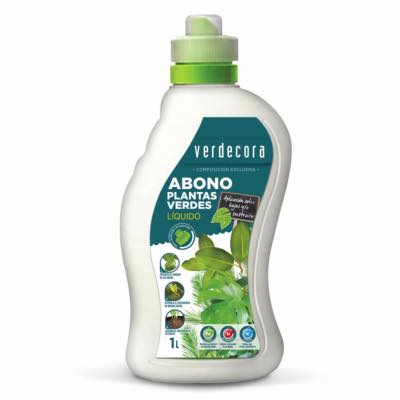
For this reason, it is important to fertilize the Asplenium every fortnight. To do this, we can use a fertilizer for green plants diluted in water; or, if we prefer, a fertilizer in slow release bars. It is important that we do not exceed the recommended amounts, since we can damage the roots of the plant.
6. The transplant, essential for its growth
If we are rigorous in the care of the bird’s nest fern, it will grow at a good pace. A growth that must be accompanied by a transplant to a larger pot. The ideal is to carry it out every two years, and always in spring.
To transplant this fern, we have to be careful with the type of substrate. They require a slightly acid soil. That is why the ideal is a mixture of heather, sand and peat.
7. Closely monitor pests, another of the bird’s nest fern care to control
Although it is a robust and resistant plant, it can be attacked by pests. In the case of Asplenium, these are basically divided into two: cochineal and fungi.
- Fungi are one of the common diseases of this plant, as it is a moisture lover. To avoid them, in addition to being careful with watering, it is advisable to remove the soil every two weeks. In this way, we will be helping to aerate the roots and prevent moisture from accumulating.
- In the case of the cochineal, we will have to stop it as soon as we detect it. It is not recommended to use a fungicide product as it can damage the plant. We will have to remove these insects from the underside of the leaves, using a cotton ball soaked in methylated spirit.
SIGNS TO KNOW THAT THE CARE OF THE BIRD’S NEST FERN IS NOT CORRECT
Sometimes and despite believing that we are strictly taking care of the bird’s nest fern, the plant is not doing well. A discomfort that translates into certain physical signs, which is important to know to correct.
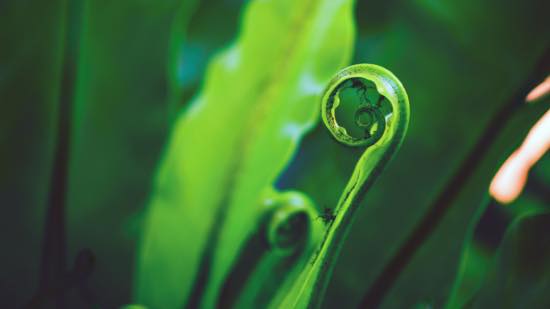
To do this, let us know some of the possible scenarios in which we cannot find. The best way to know what we have to correct in our crop:
- Brown spots on the leaves: a symptom that our Asplenium has been subjected to cold, or cold or hot air currents
- A brown tone on the edge of the leaves: our plant has been cold. Try to place it in a space with better temperature
- The leaves are yellow: it can be due to two aspects. On the one hand, that it has received direct sun. On the other, that it lacks fertilizer
- The edges of the leaves are dry: it has been hot. We can solve it by spraying the leaves
- Rot at the base of the plant: we have overdone it with watering. The ideal is to space them more, and always do it through the bottom plate of the pot
You already know the care of the bird’s nest fern. Now you just need to enjoy its simple beauty!

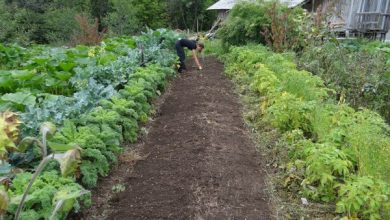

![Photo of Kiri cuttings: [Grafts, Time, Rooting and Planting]](https://www.complete-gardening.com/wp-content/uploads/2022/08/kiri-cuttings-grafts-time-rooting-and-planting-390x220.png)
